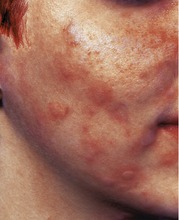Case• 3. An unpleasant surprise
SUMMARY
A 30-year-old lady develops acute shortness of breath following administration of amoxicillin. What would you do?
History
Complaint
The patient complains that she feels unwell, hot and breathless.
History of complaint
The patient has an appointment for routine dental treatment involving scaling and a restoration under local anaesthesia and antibiotic prophylaxis. She took a 3 g oral dose of amoxicillin 45 minutes ago.
Medical history
You checked the medical history before administering the amoxicillin and so you know that the patient is a well-controlled asthmatic taking salbutamol on occasions. She also suffers from eczema, as do her mother and her two children, and uses a topical steroid cream as required. The patient has had antibiotic cover before and refuses treatment without. See Case 44 for further discussion.
Dental history
The patient has been a regular attender for a number of years. She has had previous courses of penicillin from her general medical practitioner for chest infections.
▪ What is the likely diagnosis?
Anaphylaxis, arising from hypersensitivity to the amoxicillin.
Examination
▪ The patient’s face is shown inFigure 3.1. What do you see?
There is patchy erythema. In the most inflamed areas there are well-defined raised oedematous weals, for instance at the corner of the mouth and on the side of the chin. This is a typical urticarial rash and indicates a type 1 hypersensitivity reaction.
▪ What would you do immediately?
• Reassure the patient.
• Assess the vital signs including blood pressure, pulse and respiratory rate.
• Lie the patient flat (as there is no difficulty breathing).
• Call for help.
• Obtain oxygen and your practice emergency drug box.
▪ What are the signs and symptoms of anaphylaxis?
The signs and symptoms vary with severity. The classical picture is of:
• a red urticarial rash
• oedema that may obstruct the airway
• hypotension due to reduced peripheral resistance
• hypovolaemia due to the movement of fluid out of the circulation into the tissues
• small airways obstruction caused by oedema and bronchospasm.
Involvement of nasal and ocular tissue may cause rhinitis and conjunctivitis. There may also be nausea and vomiting.
▪ What does urticarial mean?
The word urticarial comes from the Latin for nettle rash. An urticarial rash has superficial oedema that may form separate flat raised blister-like patches (as in Fig. 3.1) or be diffuse. In the head and neck it is often diffuse because the tissues are lax. Markedly oedematous areas may become pale by compression of their blood supply but the background is erythematous. Patients often know an urticarial rash by the lay term hives.
Anaphylaxis is an acute type 1 hypersensitivity reaction triggered in a sensitized individual by an allergen. The allergen enters the tissues and binds to immunoglobulin E (IgE) that is already bound to the surface of mast cells, present in almost all tissues. Binding of allergen to IgE induces degranulation and the release of large amounts of inflammatory mediators, particularly histamine. This causes the vasodilatation, increased capillary permeability and bronchospasm.
▪ Type 1 hypersensitivity is also known as immediate hypersensitivity but onset was delayed for 45 minutes. Why?
Acute anaphylactic reactions may occur within seconds or may be delayed for up to an hour depending on the nature of the allergen and the route of exposure. It takes time for an oral dose of antibiotic to be absorbed and pass through the circulation to the tissues, in this case 45 minutes. The reaction would be expected about 30 minutes after intramuscular administration of an allergen but almost instantaneously after intravascular administration. The time of onset is unpredictable. Some allergens such as peanuts and latex can cause rapid reactions despite being applied topically. The variability in onset of reactions explains why patients should be observed for an hour after administration of antibiotic cover.
On examining for the signs noted above you discover that the patient is breathless and a wheeze can be heard during both inspiration and expiration indicating small airways obstruction. She feels hot and has a pulse rate of 120 beats per minute and blood pressure of 120/80 mmHg. She is conscious but the effects are becoming more severe and the rash now affects all the face and neck region and has spread onto the upper aspect of the thorax. The appearance of one arm is shown in Figure 3.2.
 |
| Fig. 3.2 |
Stay updated, free dental videos. Join our Telegram channel

VIDEdental - Online dental courses



